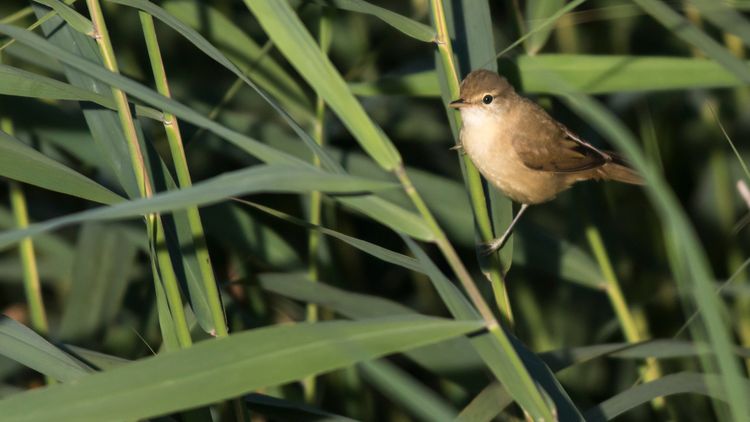Migratory birds find their way to their destination with astonishing accuracy. For a long time it was unclear how they determined their east-west position. Now Henrik Mouritsen, an Oldenburg expert on migratory birds, together with an international team of researchers has shown how reed warblers determine their east-west position by detecting the angle by which magnetic north differs from true north.
For centuries, the calculation of longitude posed a major challenge for seafarers. It wasn't until the 18th century that humans, thanks to the inventions of English clockmaker John Harrison, were able to determine their east-west position using two extremely accurate clocks to measure the difference between local time and the time at a fixed reference point. Migratory birds, however, navigate without the help of two clocks. Now Prof. Dr. Henrik Mouritsen of the University of Oldenburg and an international team of scientists have shown through experiments with reed warblers (Acrocephalus scirpaceus) that these migratory birds determine their east-west position by measuring the angle by which magnetic north differs from true north. The researchers present the results of their study in the current online edition of the renowned scientific journal Current Biology.
Migratory birds often fly thousands of kilometres, and their navigation is astonishingly accurate. They navigate using the position of the sun, the stars and the Earth's magnetic field. That is how scientists have so far explained the phenomenon of birds being able to determine their compass direction and their north-south position. But how they determine their east-west position has remained one of the biggest mysteries in the field of migratory bird research. The team of researchers from Oldenburg, Rybachy and St. Petersburg (in Russia) and Bangor (in Wales) has now demonstrated that adult reed warblers can detect magnetic declination. In other words, the birds identify the angle between magnetic north and true north. "For the first time we have provided an answer to the question of how birds determine their east-west position," said Mouritsen.
In an earlier study the researchers had already found out that reed warblers cannot determine their longitudinal position through time differences, as humans do. In further studies they also demonstrated that when displaced from east to west experienced birds can compensate for this shift, and that the Earth's magnetic field must play a decisive role in the process. But exactly which parameters help the birds to navigate remained unclear. The researchers therefore formulated the following hypothesis: perhaps the birds can measure the angle between the magnetic north pole and true north with their star compass and magnetic compass. This declination angle varies along the east-west axis at very regular intervals in Europe.
The scientists then put this hypothesis to the test in an experiment: they caught 15 reed warblers that were migrating southwards in Rybachy in northern Russia and put them in cages known as Emlen funnels that are used for testing birds' orientation?. The cages were surrounded by coil systems that can simulate a uniform magnetic field. For the tests, the scientists shifted the magnetic field by 8.5 degrees compared to that of the Earth locally, so that the artificial field corresponded to that in southern Scotland, 1,200 kilometres away. All other cues such as intensity and inclination of the magnetic field as well as smells and visual input remained unchanged. This had an "amazing effect", Mouritsen reports: "The birds responded by turning 151 degrees to fly east-south-east, instead of west-south-west, thus compensating for the virtual displacement." When the scientists did the same experiment with young reed warblers, however, the birds became confused. This confirms something that researchers have long known: birds first need to learn to navigate using a magnetic map.
According to Mouritsen, the results of the study shed an entirely new light on researchers' ideas about how birds navigate. One of the cornerstones of navigation research up to now has been that birds possess two completely distinct systems through which they determine their location (a map) and direction of flight (a compass). "But since the birds can apparently use two compasses to determine their east-west position, this strict separation between map and compass is no longer correct," Mouritsen, a neurobiologist, explains. In his opinion, this means that not only should future experiments be approached from a different perspective, but that it may also be necessary to draw entirely different conclusions from earlier experiments on bird migration.




